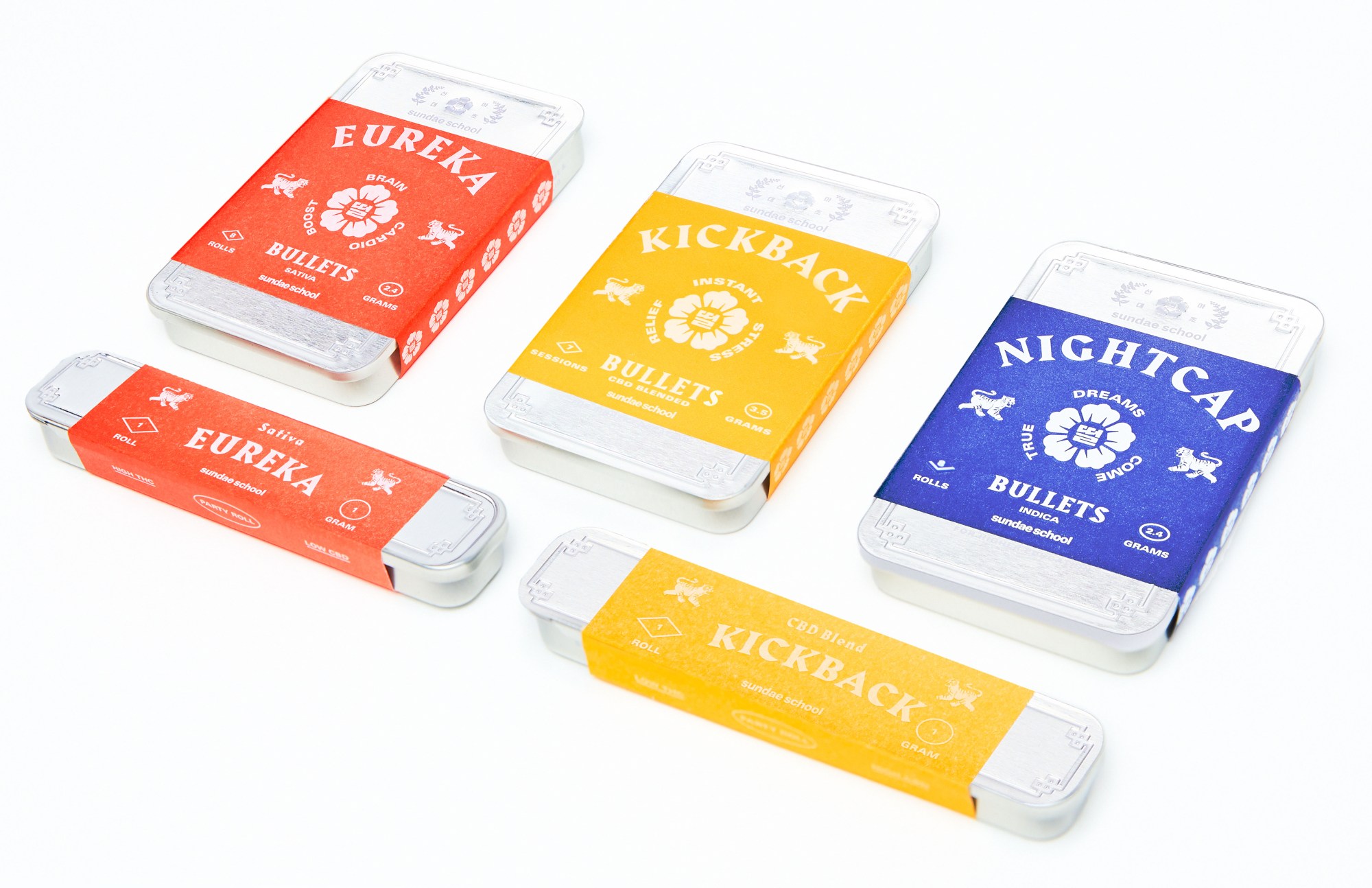The past weekend carried several holidays with it. For Dae Lim and his co-founder, the cause for celebration was the birthday of their smokewear brand, Sundae School, which they honored by rolling elaborately customized floral CBD joints for the public down at their Soho pop-up. CBD is a placeholder for the New York-based brand right now, as they plan to launch their first line of THC products in California in a few weeks.
The pair are as genuine about their love of weed as any esoteric dealer you’ve met. But they started out as Korean kids who came to boarding school in the US and needed a way to connect. Dae calls it “joint culture” — I catch him innocently supplying weed puns every so often. We sat down to discuss the new product line, the links between fashion and smoking, and the brand’s move further west.
i-D: Had you planned on making a cannabis line from the start? Or did you have to wait for legalization in California?
Dae Lim: Even when we started, we could have done it in California. But that was not at all in the realm of imagination. It was not the premeditated play to be like, “Okay there’s an opportunity here, so let’s make clothes first.” I wish I was smart enough like that!
My co-founder and I come from a business and sciences background. I studied math at Harvard and she studied economics at Columbia and then we both ended up working at a corporate consulting job for a bit. But we’ve always been creative people, exploring our identity through design, whether it’s in our sartorial choices or whether it’s in what sort of product we stand for. I had no knowledge of Photoshop, no knowledge of Illustrator, but I could draw. So I started to sketch, and I started taking Illustrator lessons, and that’s how we really started the business.
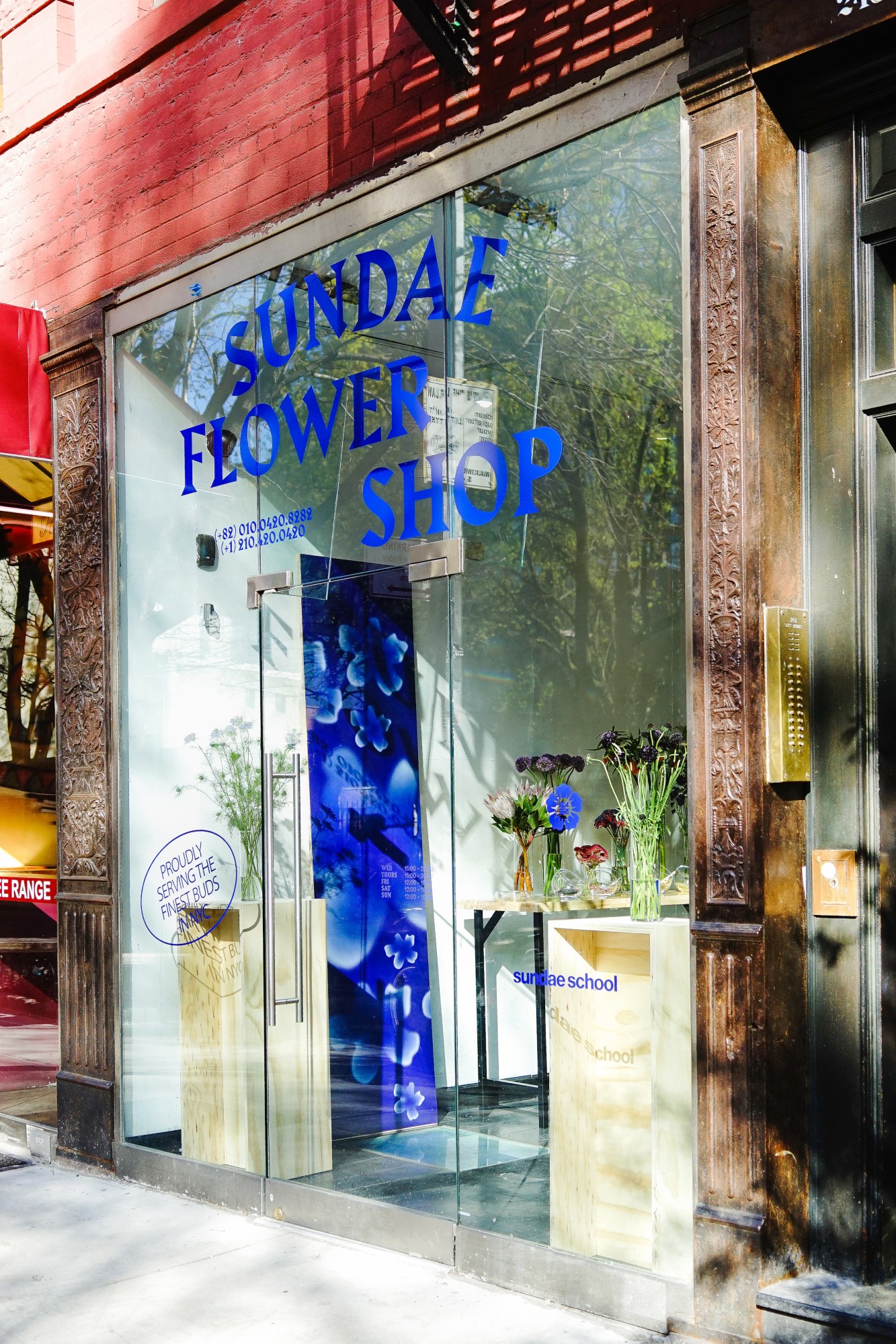
You weren’t always planning to just cash in on the cannabis market.
No, but I’m very excited because the cannabis market right now out in California is crazy. There’s a lot of hype behind it — you hear the stock multiples, they based it 20, 30, 40 times off of revenue. Canadian people are trying to buy revenue to gain market share. You hear all these crazy stories. So that’s why we titled our last collection “The Green Rush.” We interviewed so many different entrepreneurs in the cannabis space to capture the spirit aesthetically via clothes. And for our cannabis products, it’s really the same way.
How is the weed line similar to the fashion?
We’re designing for on-the-go millenials, on-the-go stoners. Our first product line we’re launching are pre-rolls, called bullets. And they’re 0.3 gram pre-rolls. Most of the pre-rolls out there right now are 1 gram pre-rolls or 0.5 gram pre-rolls. But for me as a cannabis consumer, having that information about what we’re smoking and that dosage — we call that element the “higher education” element — is so important. I hate wasting and roaching because when you pick up a roach, it tastes so bad. So we were like, let’s have a no-roach joint. How can we optimize for the quantity? We tested out so many different variations in 0.01 increments. So finally we were like, we’re going to go with 0.32. That’s the best amount to optimize the joint, at least based on our focus group.
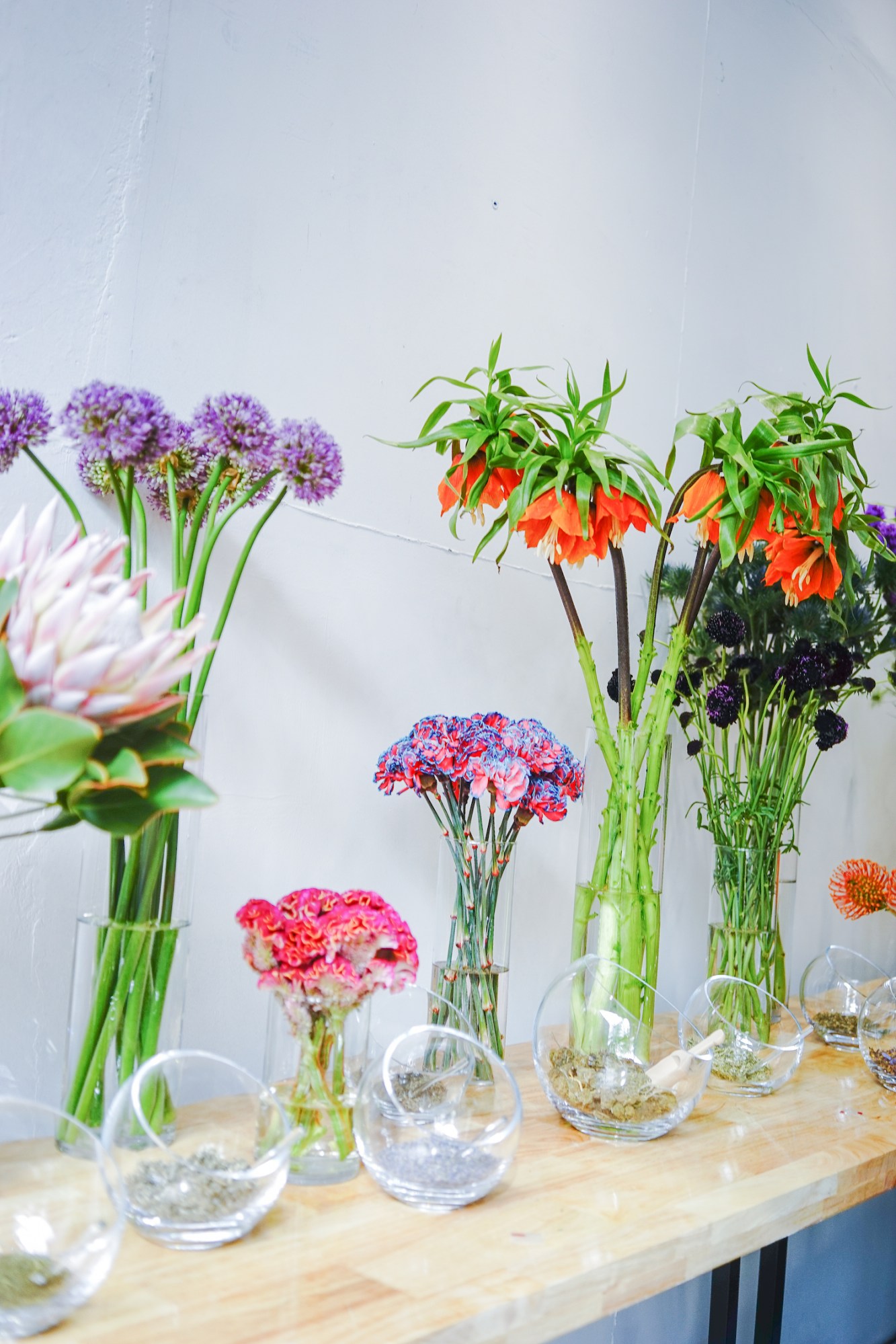
When you interviewed people as research for making the clothing line, what kind of insight did you get?
Getting data is one of the most important things for us. Even this pop-up is for us to get more data about how are people feeling about CBD. We wanted to signal our entrance into the cannabis foray through this pop-up event, but obviously THC is illegal in New York so we are taming that down and focusing more on the CBD side. For instance, when we were doing our collection designing, we spoke to around 40 people and basically were just talking about, “What is the state of the industry right now?” And then that kind of started getting us to really focus on our story.
One theme that was very clear was the exuberance. Then more and more we heard it, there were some signs of dystopia, there was some signs of impending doom, kind of like the glitter fading into dust or the Gold Rush coming to an end and leaving boon towns. There is a lot of speculation and a lot of fear about that being realized in the cannabis space.
Right, because it’s so trendy right now, how can it be sustainable?
When we heard these responses, we were like “Oh my god that is fascinating! How do we capture this fear?”
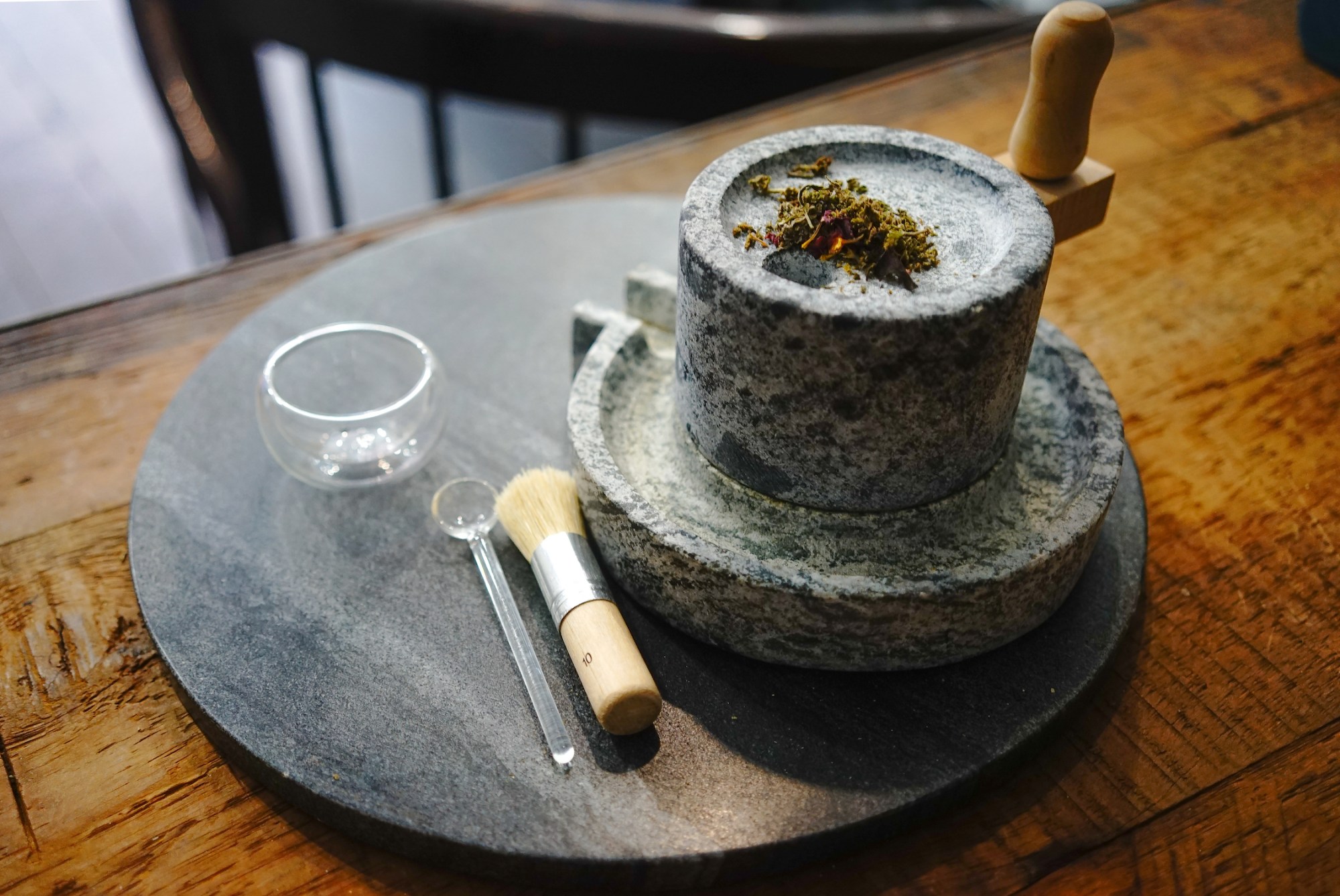
The fear of the cannabis industry is coming from multiple angles as well.
One of the stories that I remember so vividly was from my grandmother who is a survivor of the Japanese internment in Korea. And she would tell us stories about Korea in the late 1800s, early 1900s, when it started opening up its doors to Western cultures. And we were like, wow, it’s as if — as Korea enters into this new medical marijuana legalization world — we were looking at those experiences with the stories we’ve been hearing with the cannabis entrepreneurs out West and we saw the fear of westernization that happened in Korea. We were like, “Let’s try to connect these stories together.” We looked at the pant fits from the Gold Rush, a lot of workwear. And then we weaved in the Korean balloon-shaped men’s pants with the little tie at the end. It was so fun, it was so organic, and we were high most of the time.
I find the comparison to the Gold Rush fascinating.
People think that right now, it’s too much hype, that people are just throwing money.
Do you agree?
I do think that it’s definitely hyped up. But I do think there is room for thoughtful products. A lot of products are just weed, the cheapest weed. And there’s so much cheap weed out there. There’s a company selling 2017 weed in 2019 and they are charging like $15 per eighth which is just crazy, and that’s not our competition. We’re trying to curate the cannabis experience in the right dose and we want you to understand what you’re smoking and how you’re smoking it. We’re starting with the bullets but we’re also rolling out our vape pens in matcha flavor and yuzu flavor. We’re working really hard with scientists and formulists to freeze dry the yuzu fruit from Korea and extract the tarpines, and same with the green tea process. It’s really fun for us and the benefit that comes with the job is that I get to smoke a lot of weed (laughs).
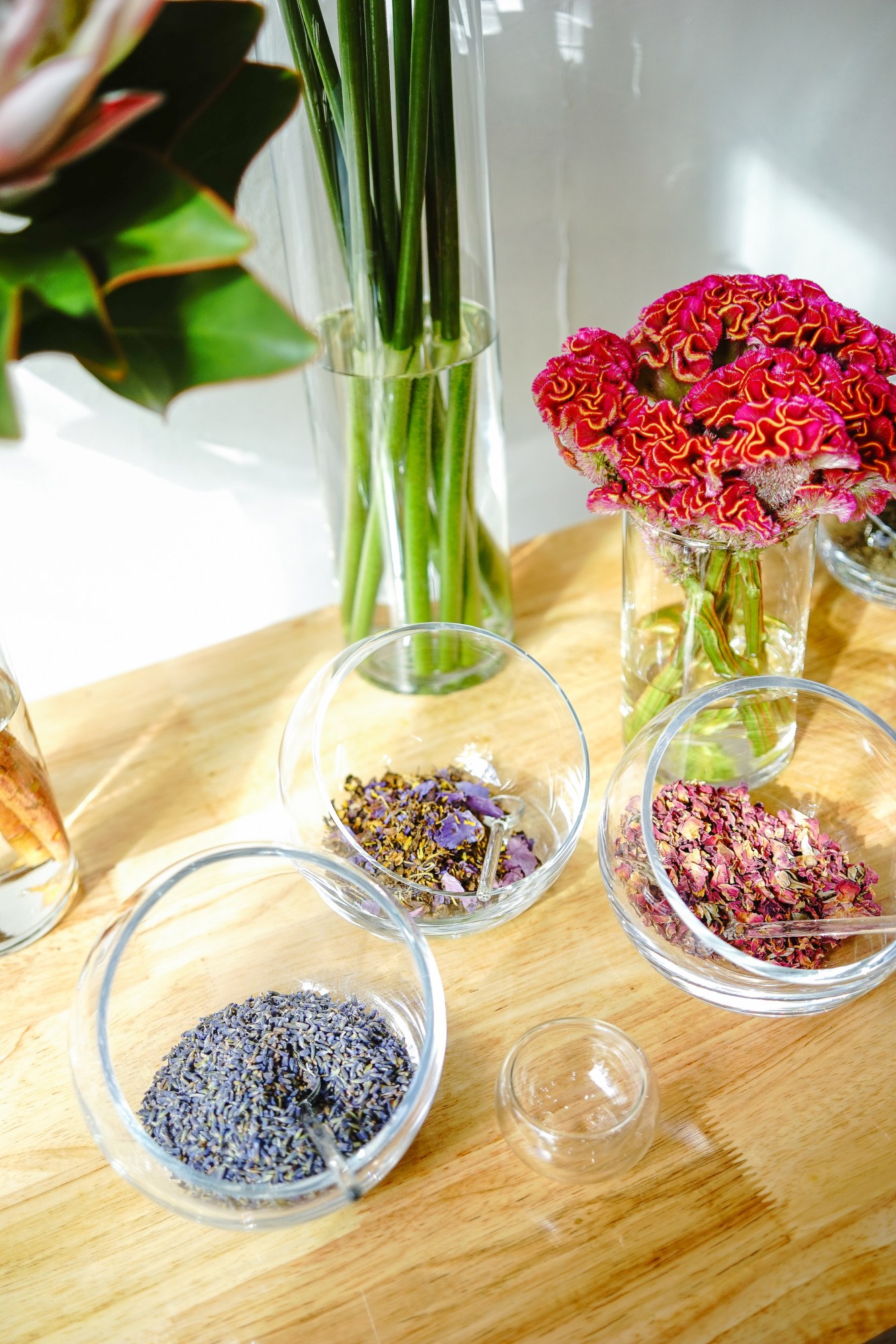
So many people don’t know what weed they’re smoking and honestly get exhausted when some weed elitist tries to explain it.
And everyone has different endocannabinoid systems so everyone is going to react differently. Some weed that makes you sleepy may make someone feel fucking alert. At the end of the day there’s no one answer, and it’s not just with weed, it’s with everything. That’s why we have this little diary that we keep after we do the sample testing because it’s a learning process. And we don’t take this too seriously because at the end of the day it is here to enhance our senses and enhance our consciousness. I would love it to be a more effective tool for unleashing creativity.
I like that it’s designed for people to be creative.
That’s been what we’ve been thinking about from day one. I think there are a few different use cases. I don’t think you have to be this chef or fashion designer or graffiti artist to be creative. I think there’s creativity in all of us, even if it’s just doodling. I used to doodle so much when I was working on my consulting jobs. I would just draw butterflies everywhere. And mathematicians are so creative in the ways in which they come up with different routes to get to the same answer.
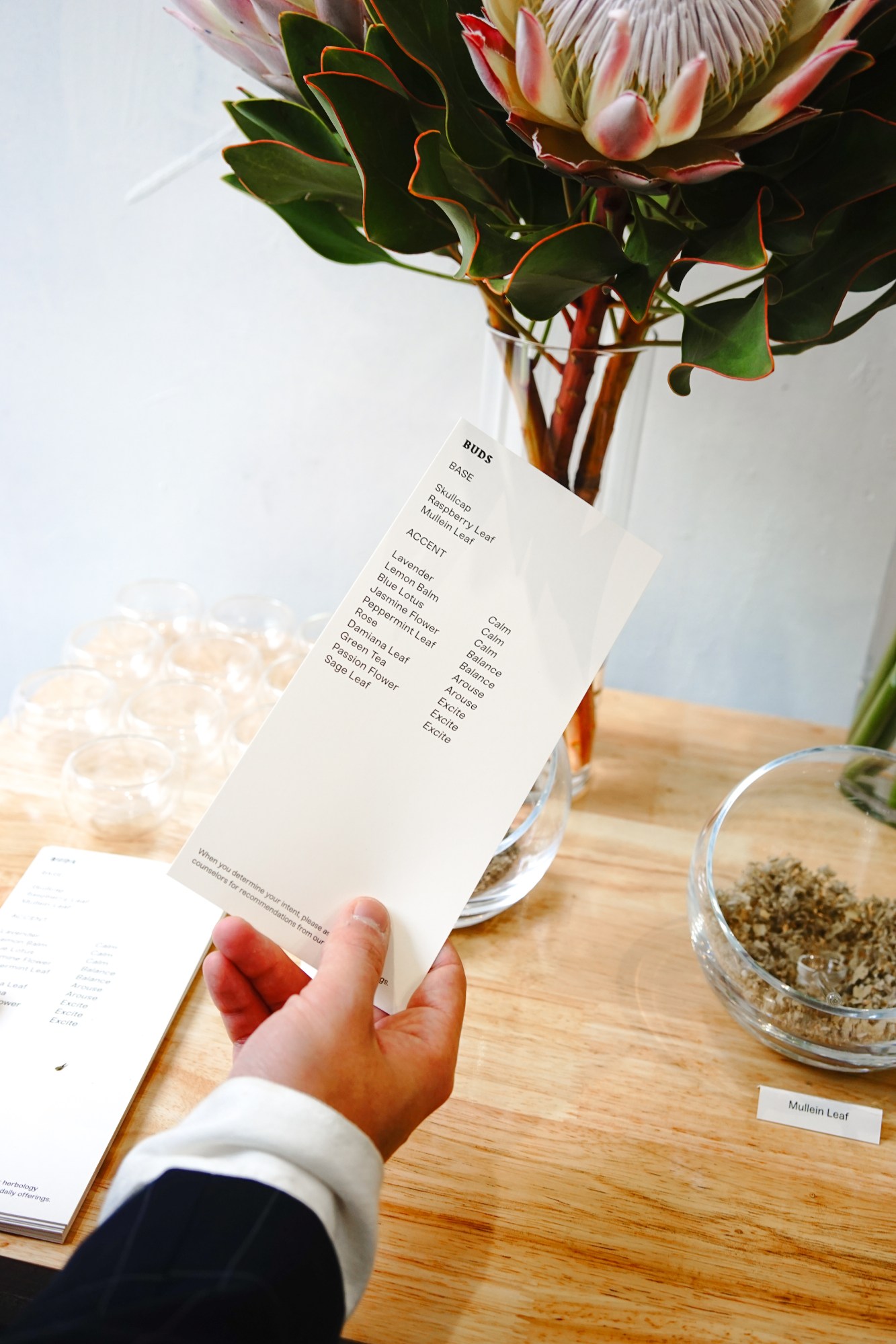
But it’s not all just for creativity.
We have three products: the indica product, the sativa product, and the CBD product. One’s called “Eureka” for sativa and we are really optimizing that to unleash creativity. We want it to feel as if you are waltzing through the sunset. We seasonally vary our sativa blend mix. We are launching with three different blends and we want to use the best flower available at the time. The best do-si-do is not going to be the same do-si-do strain.
So basically whether you’re an artist or whether you’re a student, if you want that morning boost or that revival from the night that’s what we optimized it for. Our bullets, especially, we optimized for people on the go. You don’t want to always sit down and roll — and that’s amazing if you do! I roll my own joints every night but during the day, in the morning, you don’t want to do that.
For our CBD products we really optimize for people who are — well, I had this image of Isabelle right here who is our PR agent. And when her boss yells at her, she would go outside and smoke the “Kickback” joint. That’s the type of millennial angst that we’re dealing with these days, and we want to optimize that for the WeWork warriors. So something that you won’t get stupid high, you’ll just get a nice uplifting buzz.
And then for indica, it’s really for you to dream on. We thought about the effect of swimming in a galaxy. For sleep, for that alone time right before bed. At the end of the day, we believe in individuality and that cannabis can enhance your senses. And that’s how you build upon yourself and learn about what you can feel and what you can think. We really hope that our product can be a companion in that journey.

Well, I love the CBD joint that you just ground for me. I wish I could always grind in a kitchen-grade tofu grinder!
It’s mat dol which is a traditional Korean grinder that you use to make tofu. So what you do is you put wet soybeans through that little hole, grind them, grind them, and then you get tofu water and then you strain it and the hard stuff is tofu. And we were really high one day and we were like, we want this experience to be as interactive as possible. Especially since our main thesis is that cannabis chances consciousness, it enhances your senses. We were like, we need to have some tactile objects, so let’s see if this works. So we ordered it and we tested it and we were like, “Wow this actually grinds!” I knew about it because I had one in my house in Korea because we make our own tofu — and we make our own kimchi. You should ask your mom about mat dol.
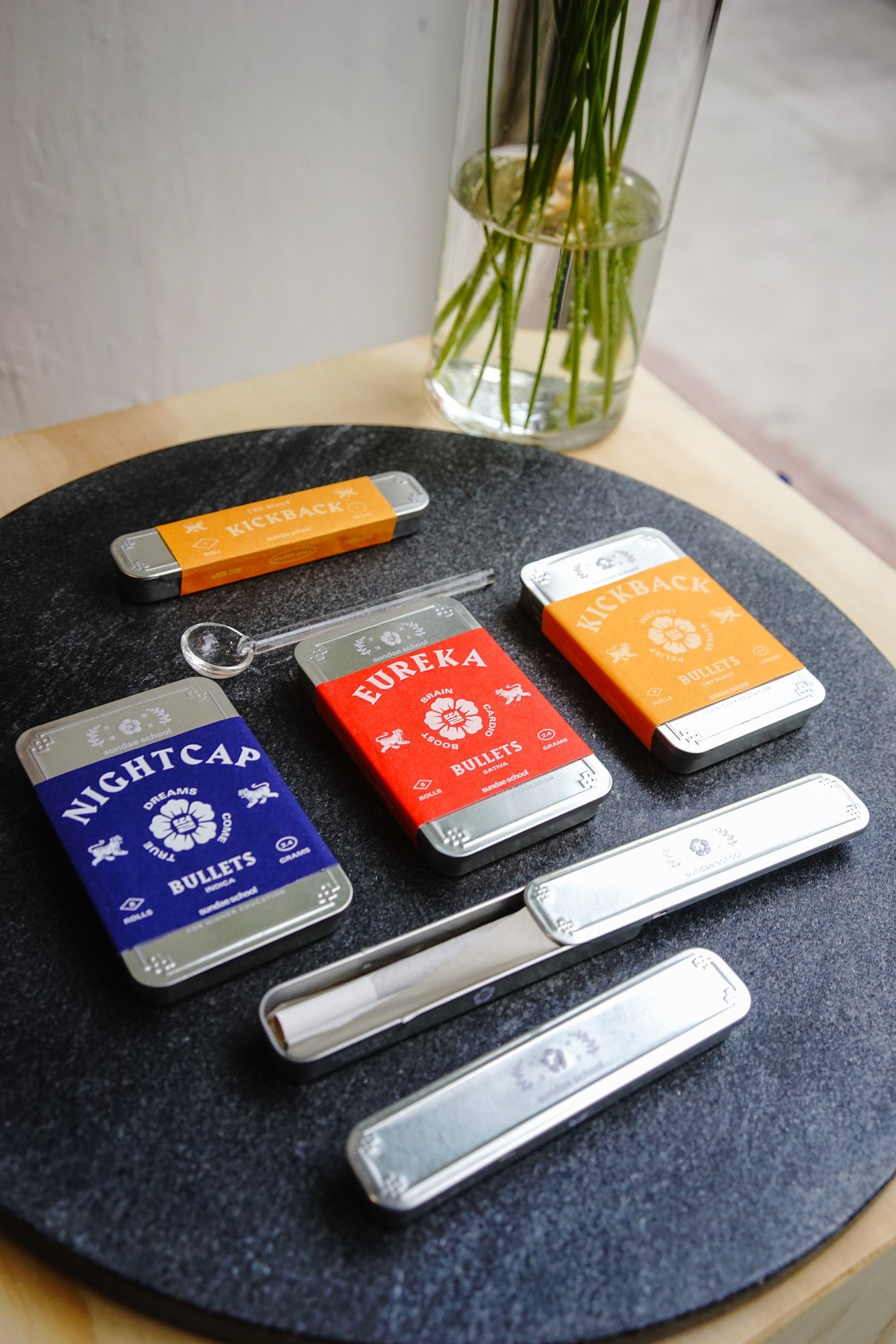
I definitely feel seen watching these two cultures merge. People never associate high-achieving Asian students with being stoners.
High achieving and stoner, period. And I think that stigma is changing as our generation is growing up a little more. Even me, I’m the product of my society. When I was at my old company when I was hiring people, I was iffy if he or she looks like too much of a stoner. Like, will this affect our team’s productivity? But meanwhile I was smoking myself every night. It was such a double edged sword. Now for Sundae School, we are looking for stoners! We are looking for people who love the craft.
But for us, the purpose is not to make a stance as a Korean American, Asian American, Pan-Asian brand. The aesthetics that are familiar to us are Korean aesthetics. Everyone on our team is Korean, that’s where we grew up. We’re all American as well, though. I’m American, not by birth, but by the means of immigration and naturalization. And as we were reflecting upon our American experience, cannabis right now — it used to be such a taboo topic that was mainly associated with non-white, non-Asian people. But now with this new wellness rebrand of cannabis, if you go to dispensaries there are just white faces everywhere. And we are not even the disenfranchised folks here. Like, “Oh we’re Asian stoners and no one thinks we’re stoners,” like that is not a real problem.
But there are people who are deeply disenfranchised by cannabis and marijuana related crimes. For us, we are about showing our culture and showcasing that but also about giving back to those other people who have been disenfranchised by this new budding business. We work with different cannabis-related charities, and different education charities. For instance the proceeds from this 420 event, this party we’re doing with Bubble T, we’re donating to DPA, the Drug Policy Alliance. At the end of the day, knowledge is the first step toward broadening your horizons, toward enlightenment. And hopefully that also applies with cannabis. If you know what it is. My mom, she’s still not that convinced. I mean, she still wouldn’t smoke with me, but at least she knows. At least she feels comfortable with it enough to talk about it because I have kind of walked her through the science more than ten times.
I’m so glad to hear that you recognize that there are people who are not benefitting at all from cannabis becoming “less taboo” in the American market. How anything related to drugs is a health issue for white people, and a crime issue for people of color.
And there are so many allies that are white. There are so many companies that I personally know that are run by amazing white men and women who are aware of this, and who actively give back because that’s the least they can do. As we were doing research about this industry, that’s when we realized that policy-making is going to be so important in shaping the future of the American cannabis market. The industry needs to work closely with interest groups, and especially with minority interest groups and I think that’s so crucial.
